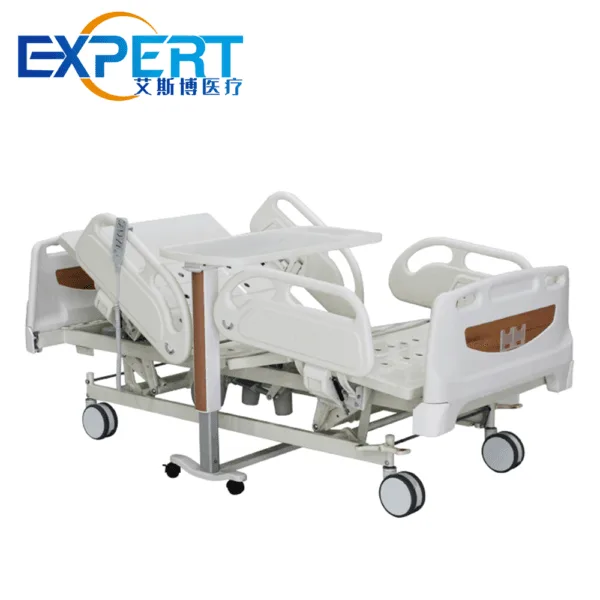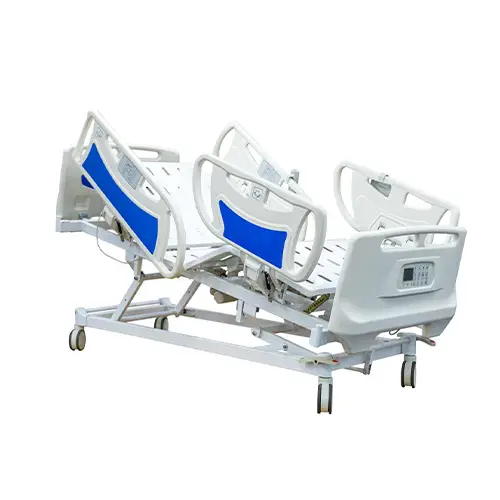Die Anschrift
304 Nordkardinal St.
Dorchester Center, MA 02124
Arbeitsstunden
Montag bis Freitag: 7:00 - 19:00
Wochenende: 10:00 - 17:00
Willkommen auf meinem Blog!
Bevor wir in den Inhalt eintauchen, wenn Sie an unseren Produkten interessiert sind oder Fragen haben, besuchen Sie bitte unsere Kontaktiere uns Seite auf der Website. Unser Team steht Ihnen bei Anfragen, Bestellungen oder sonstiger Unterstützung gerne zur Verfügung.
Lassen Sie uns nun gemeinsam unsere Reise beginnen. Ich hoffe, Sie finden die Inhalte hier aufschlussreich, spannend und wertvoll.

Bei der häuslichen Pflege ist die Wahl der richtigen Länge eines Krankenhausbettes entscheidend für den Komfort des Patienten und die Entlastung des Pflegepersonals. Ob sich der Patient von einer Operation erholt, eine chronische Krankheit hat oder zusätzliche Hilfe benötigt – das Bett muss seinen körperlichen Bedürfnissen gerecht werden, ohne unnötige Belastungen zu verursachen.
Dieser Blog führt Sie durch die verschiedenen Aspekte der Wahl der richtigen Krankenhausbettlänge, die Faktoren, die Ihre Wahl beeinflussen, und wie sich diese Entscheidung auf das allgemeine Wohlbefinden des Patienten auswirkt. Wenn Sie verstehen, wie wichtig die Wahl der richtigen Krankenhausbettlänge ist, können Sie eine fundierte Entscheidung treffen, die sowohl Komfort als auch Praktikabilität für die häusliche Pflege bietet.
Die Standardlänge eines Krankenhausbettes beträgt typischerweise etwa 203 cm (80 Zoll) oder 2,01 m (6,67 Fuß). Diese Länge bietet den meisten Erwachsenen ausreichend Bewegungsfreiheit und gleichzeitig Halt von Kopf bis Fuß. Je nach Größe und Mobilitätsbedarf des Patienten kann jedoch eine andere Bettlänge erforderlich sein.
Einige Krankenhausbetten sind mit Überlängen erhältlich, oft bis zu 213 cm oder mehr. Diese Überlängenbetten eignen sich für größere Patienten, die mehr Platz zum Ausstrecken benötigen, ohne sich eingeengt zu fühlen. Es gibt aber auch kürzere Betten, typischerweise um die 190 cm, für Patienten mit kleinerer Statur oder solche, die einen kompakteren Raum bevorzugen. Wenn Sie die verschiedenen Längen kennen, können Sie die optimale Lösung für die Bedürfnisse Ihres Patienten auswählen.
| Länge des Krankenhausbetts | Geeignet für | Unterstützung für durchschnittliche Körpergröße |
|---|---|---|
| 75 Zoll | Kleinere oder kleinere Patienten | Bis zu 5 Fuß 8 Zoll |
| 80 Zoll | Standardlänge für die meisten Erwachsenen | Bis zu 1,80 m groß |
| 84 Zoll | Größere Personen, die mehr Platz benötigen | Über 1,80 m groß |
Die Wahl der richtigen Länge eines Krankenhausbettes gewährleistet, dass der Patient optimal gestützt wird und bequem ruhen kann. Zu kurze oder zu lange Betten können Unbehagen oder Mobilitätseinschränkungen verursachen, was zu weiteren gesundheitlichen Komplikationen führen kann. In der häuslichen Pflege, wo Platz und Komfort im Vordergrund stehen, spielt die Bettlänge eine entscheidende Rolle für eine erholsame, sichere und heilsame Umgebung.









Der wichtigste Faktor bei der Bestimmung der passenden Länge eines Krankenhausbettes ist die Körpergröße des Patienten. Größere Personen benötigen mehr Platz, um bequem zu liegen. Dies lässt sich durch die Wahl von Überbetten erreichen. Ebenso benötigen Patienten mit eingeschränkter Mobilität möglicherweise zusätzlichen Bewegungsspielraum, um sich aufzusetzen oder ihre Position zu verändern, ohne sich durch den Bettrahmen eingeschränkt zu fühlen.
Patienten, die beim Umlagern oder Umsteigen aus dem Bett Hilfe benötigen, bietet ein längeres Krankenhausbett mehr Flexibilität. Außerdem kann es verhindern, dass die Füße des Patienten über die Kante hängen, was zu Durchblutungsstörungen oder Beschwerden führen kann.
Auch die Raummaße spielen eine wichtige Rolle bei der Wahl der Länge eines Krankenhausbettes für die häusliche Pflege. Ein längeres Bett benötigt mehr Stellfläche, was die Bewegungsfreiheit von Patient und Pflegepersonal im Raum einschränken kann. Bei begrenztem Platzangebot kann ein Krankenhausbett in Standardlänge oder ein kürzeres Bett die praktischere Wahl sein, da es genügend Platz für medizinische Geräte, Pflegepersonal und Bewegungsfreiheit bietet.
Messen Sie vor dem Kauf eines Krankenhausbetts den verfügbaren Platz aus, um sicherzustellen, dass die gewählte Länge bequem hineinpasst, ohne den Raum zu überfüllen.
Krankenhausbetten verfügen über verschiedene Verstellmöglichkeiten, darunter die Möglichkeit, Kopf- und Fußteil anzuheben und die Bettlänge zu verlängern oder zu verkürzen. Für Patienten, die regelmäßig ihre Position anpassen müssen, bietet ein längenverstellbares Bett mehr Flexibilität.
Bei manchen Betten kann die Länge an unterschiedliche Situationen angepasst werden. So können Pflegekräfte das Bett bei Bedarf verlängern oder platzsparend verkürzen, wenn es nicht benötigt wird.
Neben der Größe und dem Platzangebot ist es wichtig, die allgemeinen medizinischen Bedürfnisse und den Komfort des Patienten zu berücksichtigen. Bei Patienten mit Beschwerden wie geschwollenen Beinen oder häufigen Positionswechseln bietet ein längeres Bett den nötigen Platz für zusätzliche Kissen oder therapeutische Geräte.
Darüber hinaus gewährleistet die Wahl der richtigen Länge eine gute Körperhaltung der Patienten und vermeidet Muskelzerrungen, was insbesondere bei einer Langzeitpflege wichtig ist.


Für Pflegekräfte kann die richtige Länge eines Krankenhausbettes bei alltäglichen Aufgaben wie dem Umlagern oder Umlagern des Patienten einen erheblichen Unterschied machen. Ist das Bett zu kurz, kann der Patient nach unten rutschen oder sich eingeengt fühlen, was es dem Pflegepersonal erschwert, ihn sicher zu bewegen. Umgekehrt kann ein zu langes Bett den Zugang zum Patienten oder die Durchführung pflegebezogener Aufgaben unnötig erschweren.
Ein Krankenhausbett in der richtigen Größe reduziert die Belastung des Pflegepersonals, insbesondere beim Umlagern oder bei der Positionskorrektur des Patienten. Betten mit der richtigen Länge reduzieren die Notwendigkeit umständlichen Hebens oder Greifens und minimieren so das Verletzungsrisiko für Patient und Pflegepersonal. Die richtige Länge kann dem Pflegepersonal zudem die Nutzung von Hilfsmitteln wie Hebevorrichtungen, Bettgittern oder Mobilitätshilfen erleichtern.
Die richtige Länge eines Krankenhausbettes kann das Wohlbefinden des Patienten maßgeblich beeinflussen. Ein zu kleines oder zu großes Bett kann Unbehagen verursachen, was Beschwerden verschlimmern oder die Genesung behindern kann. Durch die Wahl der richtigen Länge sorgen Sie dafür, dass der Patient bequem liegt und gut gestützt ist. Dies fördert einen besseren Schlaf, eine schnellere Heilung und insgesamt eine positivere häusliche Pflege.

| Länge des Krankenhausbetts | Pro | Nachteile |
|---|---|---|
| 75 Zoll | Kompakt; ideal für kleinere Räume | Für größere Personen möglicherweise zu kurz |
| 80 Zoll | Standardgröße; passt den meisten Patienten | Ist möglicherweise nicht für größere Patienten geeignet |
| 84 Zoll | Bietet zusätzlichen Platz für größere Personen | Benötigt mehr Platz und kann Räume überfüllen |
Die richtige Wahl Länge eines Krankenhausbettes is critical for creating a comfortable and efficient home care environment. The patient’s height, mobility, room size, and medical needs all play a role in determining the most appropriate bed length. Standard-length beds are suitable for most individuals, but taller patients may benefit from extended-length beds to ensure their comfort and safety. Caregivers also benefit from the right bed length, as it improves access and reduces the strain involved in providing care.
Die Wahl der richtigen Krankenhausbettlänge erhöht nicht nur den Komfort des Patienten, sondern sorgt auch für eine insgesamt bessere Pflegeerfahrung. Dadurch wird es sowohl dem Patienten als auch dem Pflegepersonal leichter gemacht, tägliche Aufgaben zu bewältigen und eine höhere Lebensqualität aufrechtzuerhalten.
Was ist die Standardlänge eines Krankenhausbett?
Die Standardlänge eines Krankenhausbetts beträgt normalerweise 80 Zoll, es stehen jedoch auch andere Optionen zur Verfügung, beispielsweise 75 Zoll kürzere Betten oder 84 Zoll längere Betten für größere Personen.
Wie wähle ich die richtige Länge eines Krankenhausbett für die häusliche Pflege?
Um die richtige Länge zu wählen, berücksichtigen Sie die Körpergröße des Patienten, seine Mobilitätsbedürfnisse und den verfügbaren Platz im Zimmer. Ist der Patient über 1,80 m groß, kann ein Bett mit Überlänge die beste Option sein.
Können Krankenhausbetten in der Länge verstellt werden?
Ja, einige Krankenhausbetten sind längenverstellbar, sodass Sie das Bett je nach Bedarf verlängern oder verkürzen können. Diese Funktion bietet Flexibilität für unterschiedliche Pflegebedürfnisse.
Warum ist die Länge eines Krankenhausbett wichtig?
Die Länge eines Krankenhausbettes ist entscheidend für den Komfort des Patienten und die Vermeidung gesundheitlicher Probleme wie Durchblutungsstörungen oder Unwohlsein. Sie beeinflusst auch die Fähigkeit des Pflegepersonals, die Pflege effektiv zu gestalten.
Was soll ich tun, wenn mein Patient zu groß für ein Bett mit Standardlänge ist?
Wenn Ihr Patient überdurchschnittlich groß ist, sollten Sie den Kauf eines Krankenhausbetts mit Überlänge in Erwägung ziehen. Dieses misst in der Regel 213 cm und bietet mehr Platz und Komfort.
